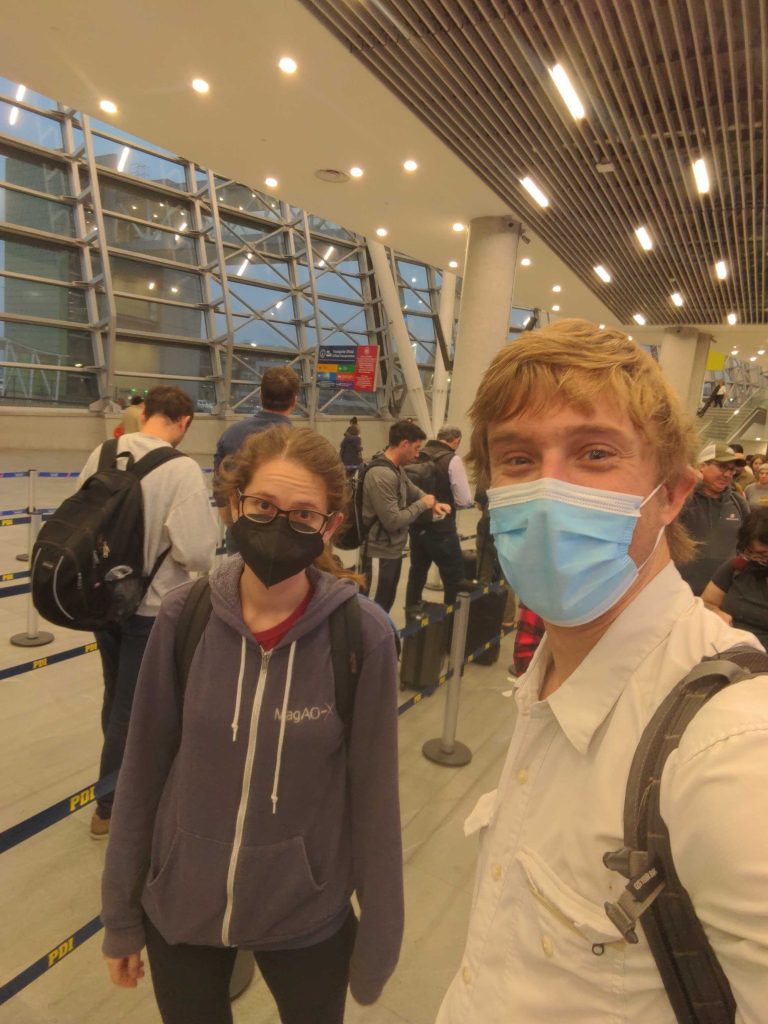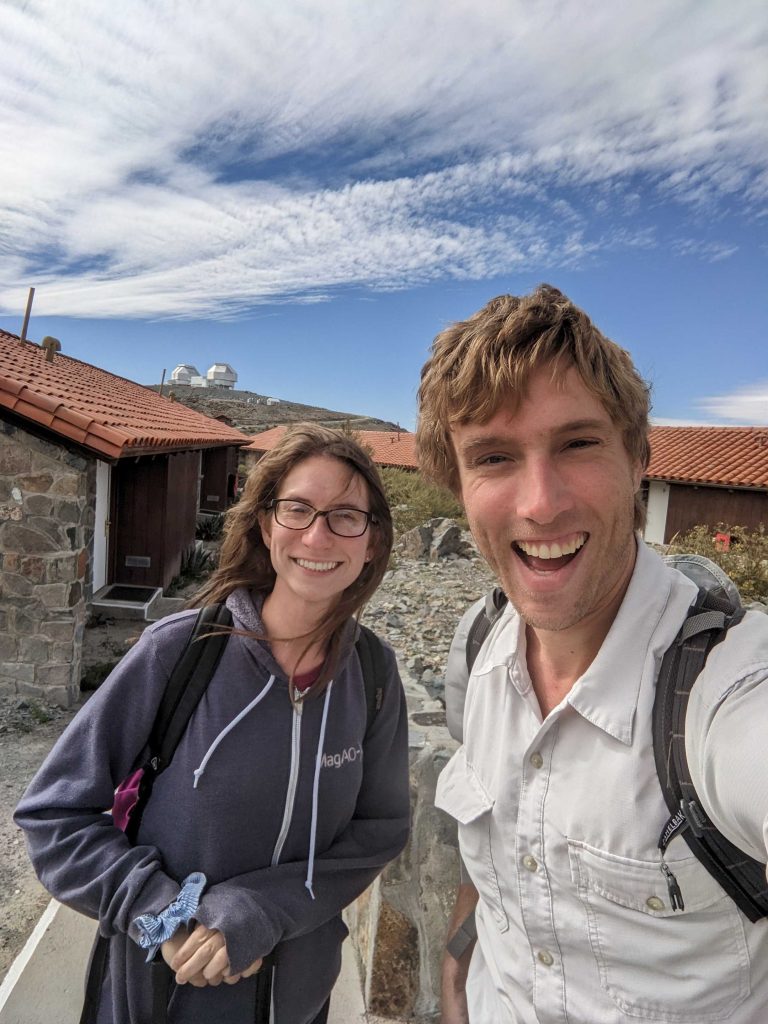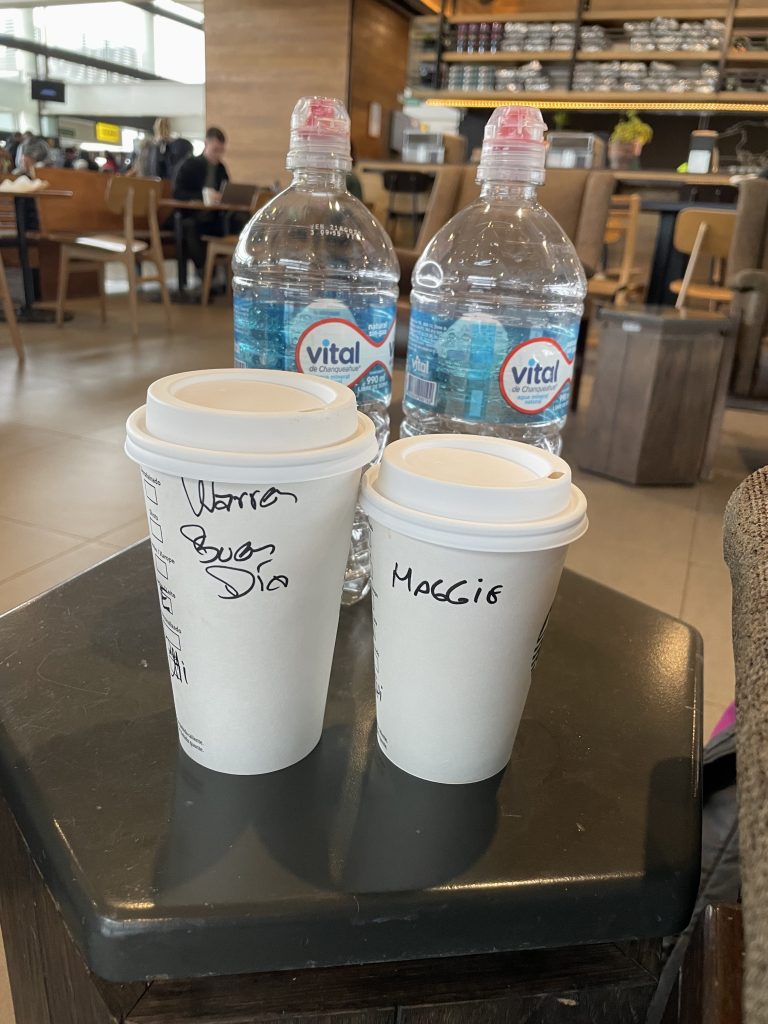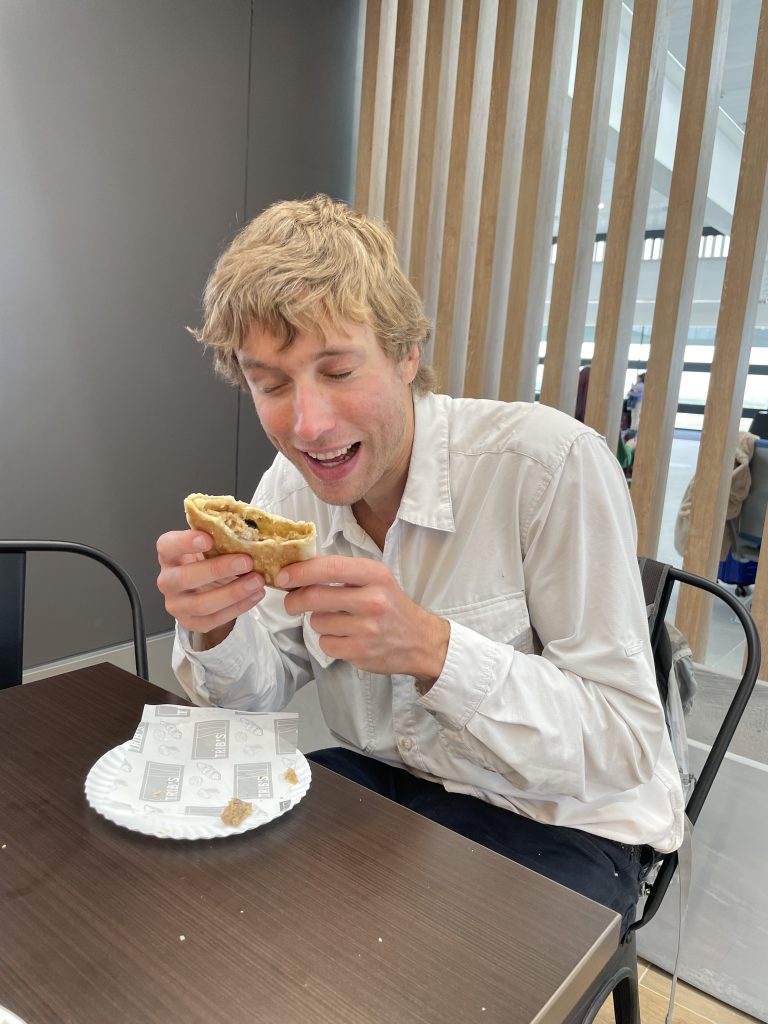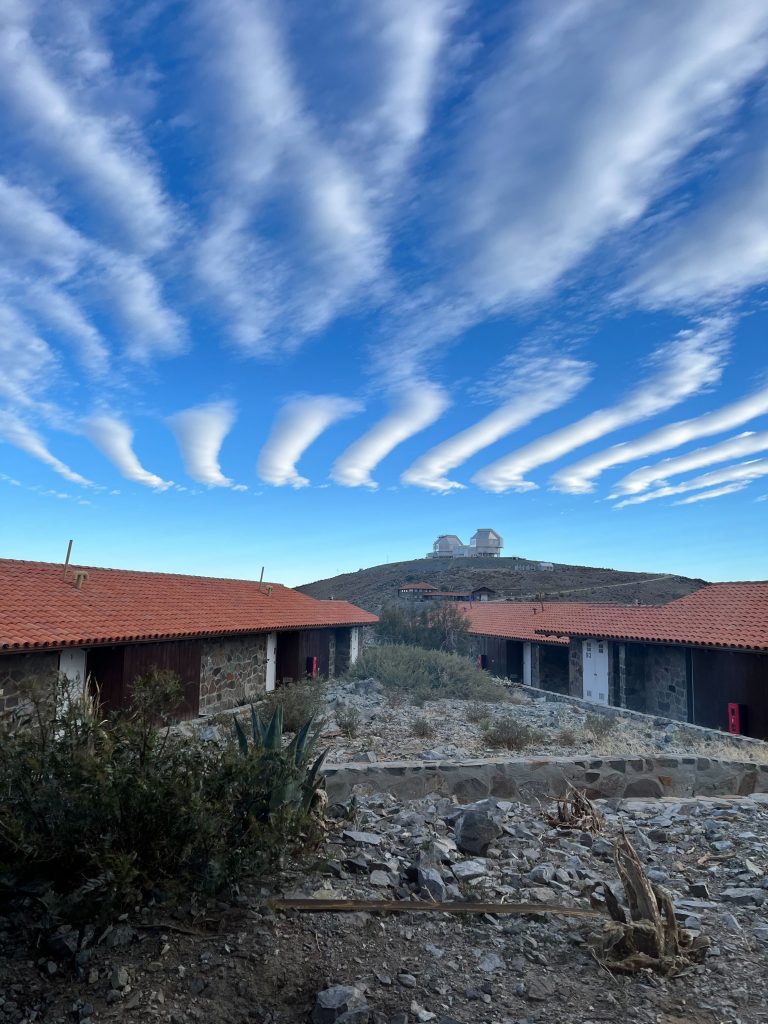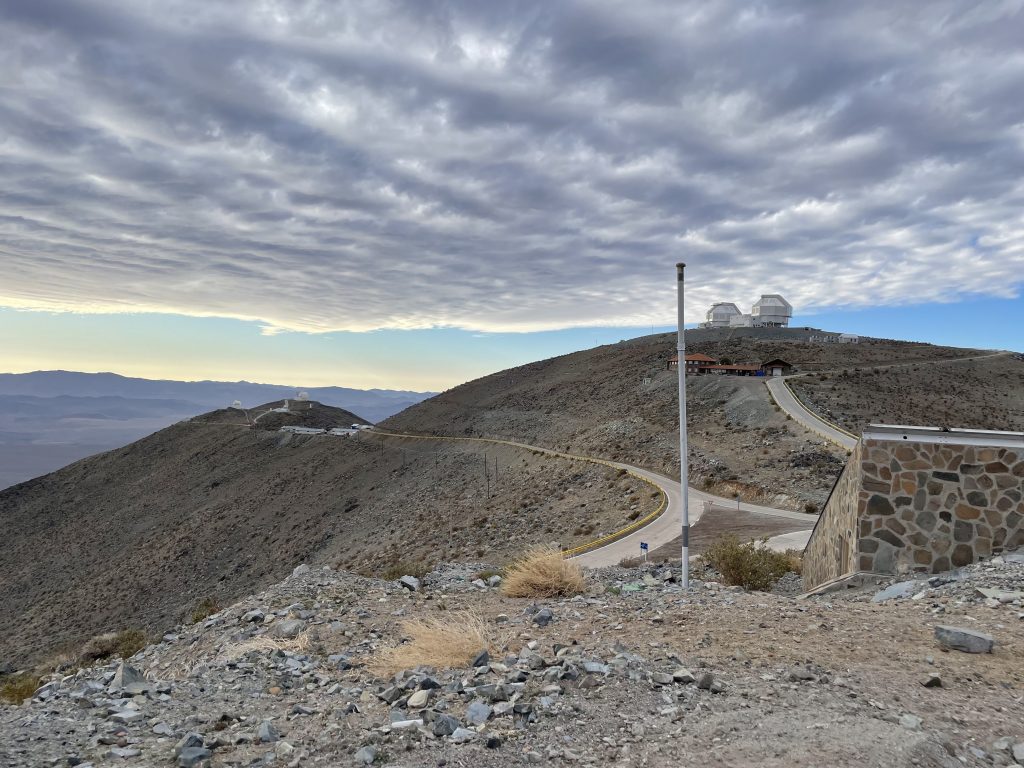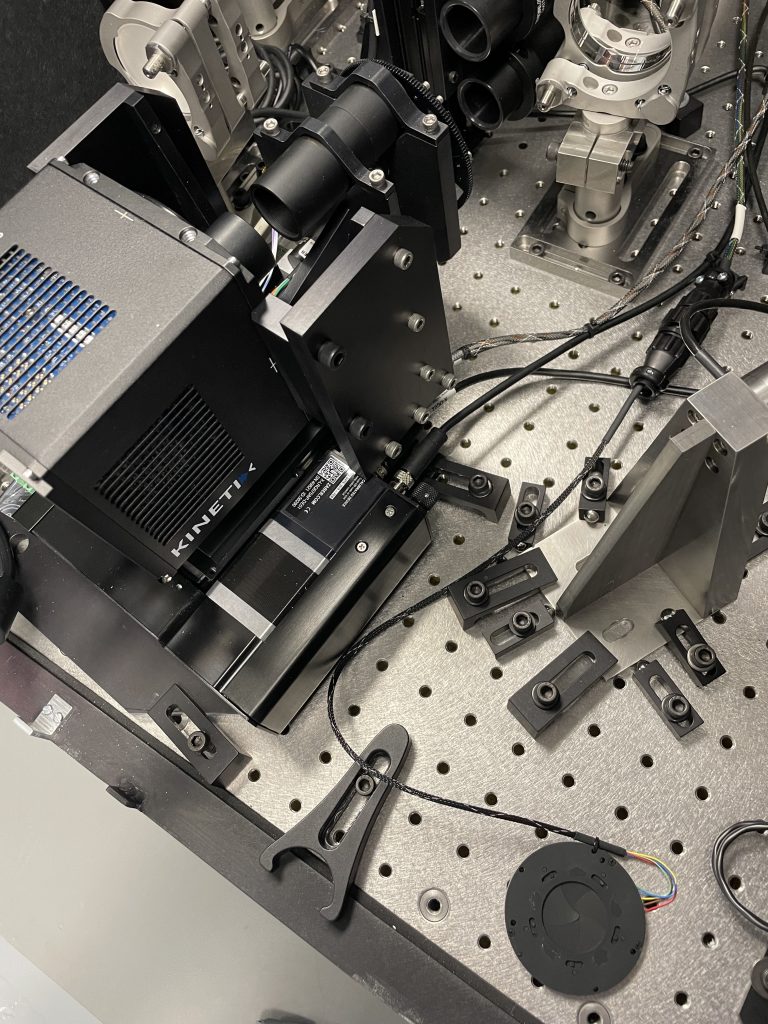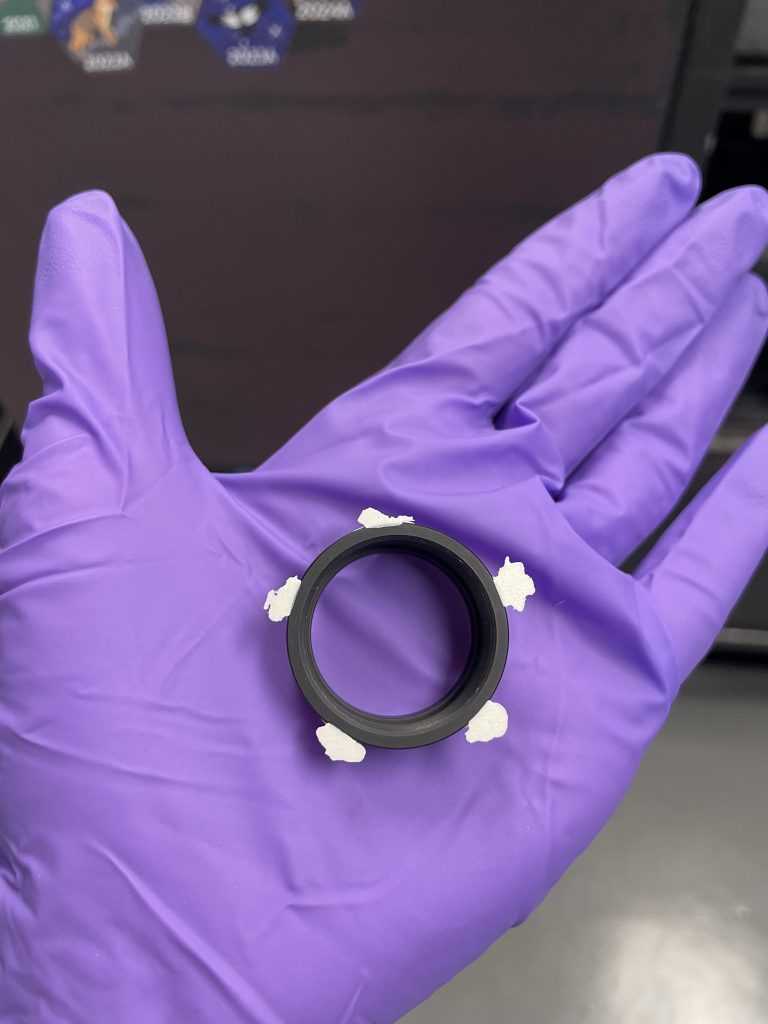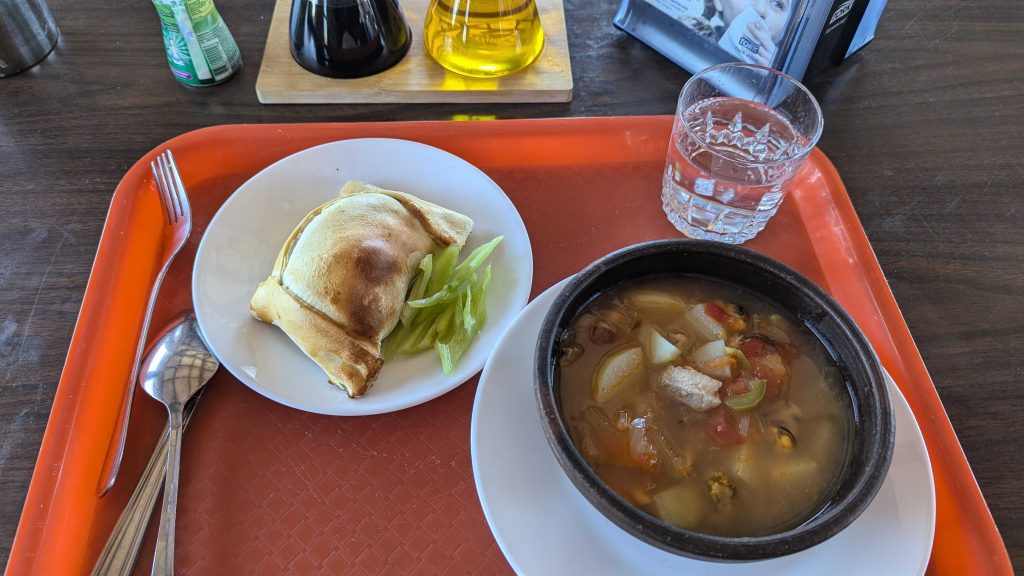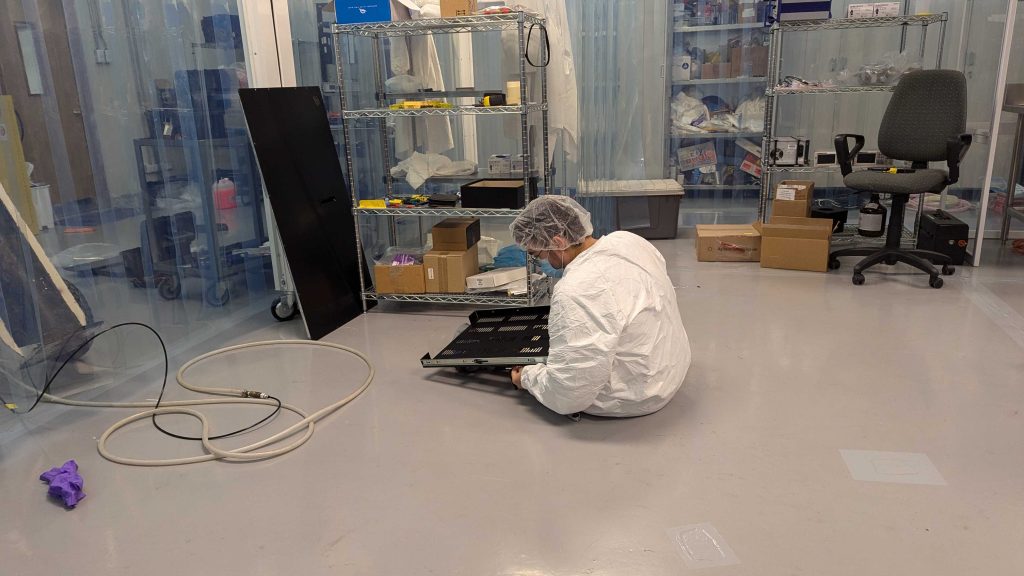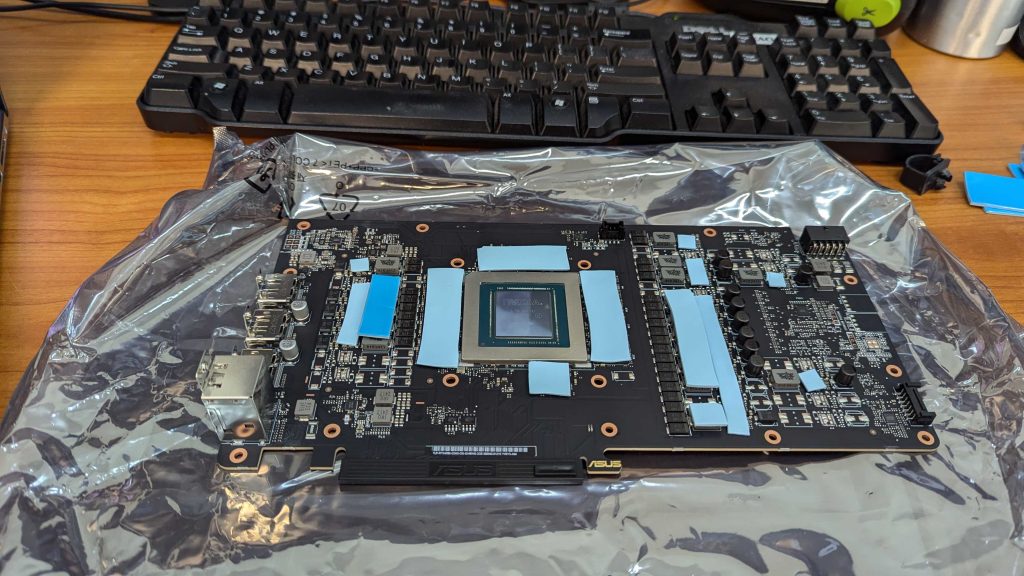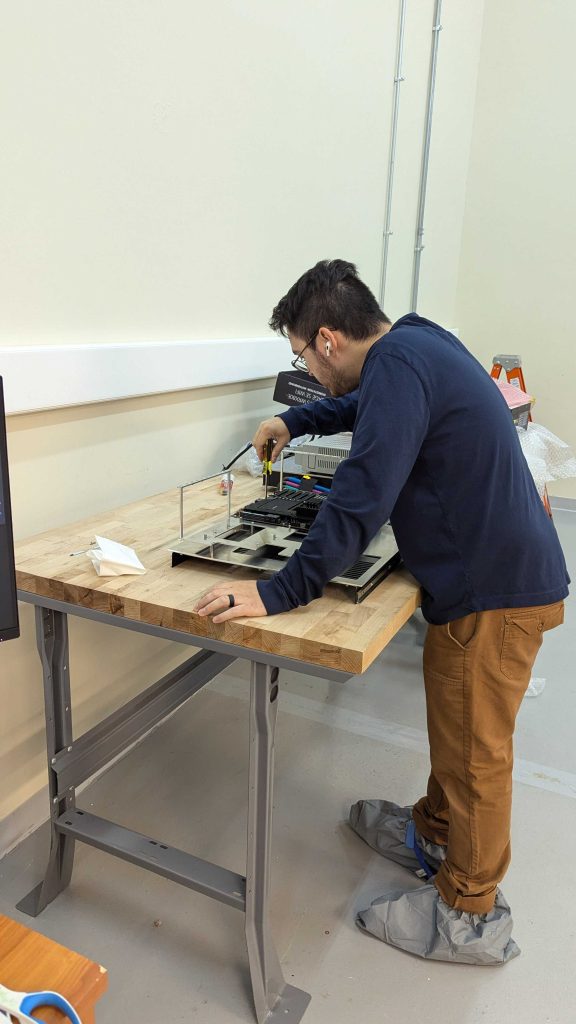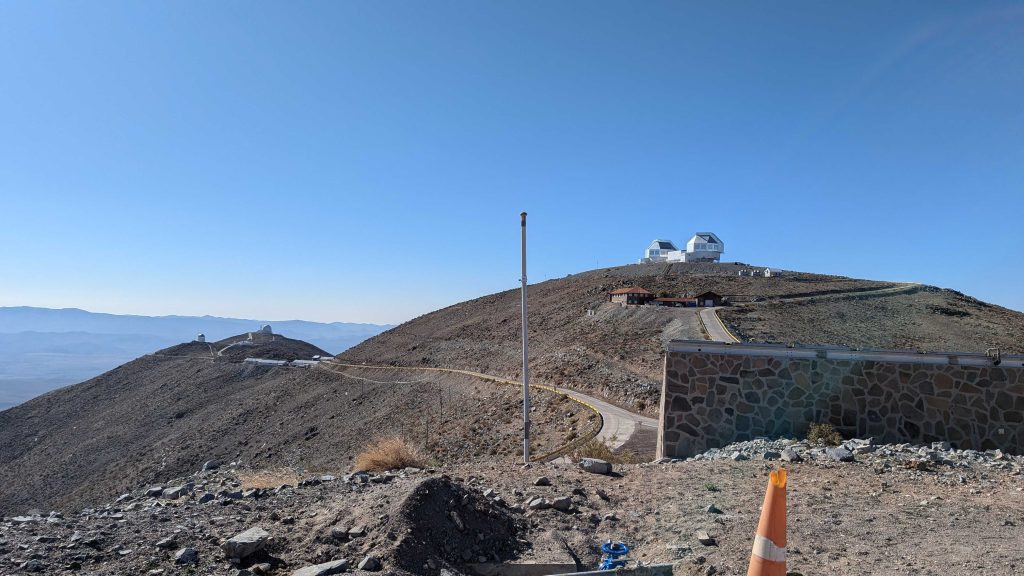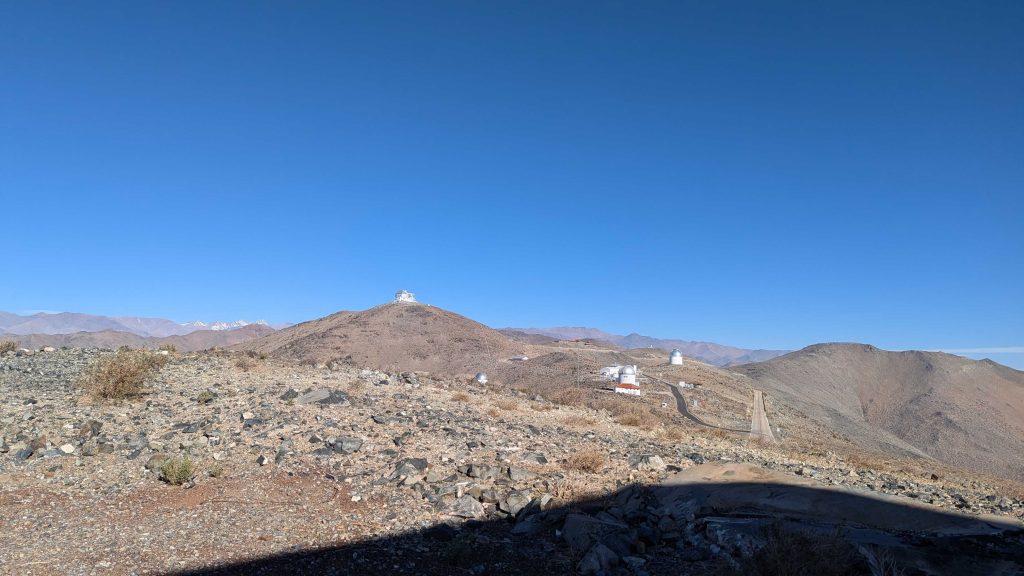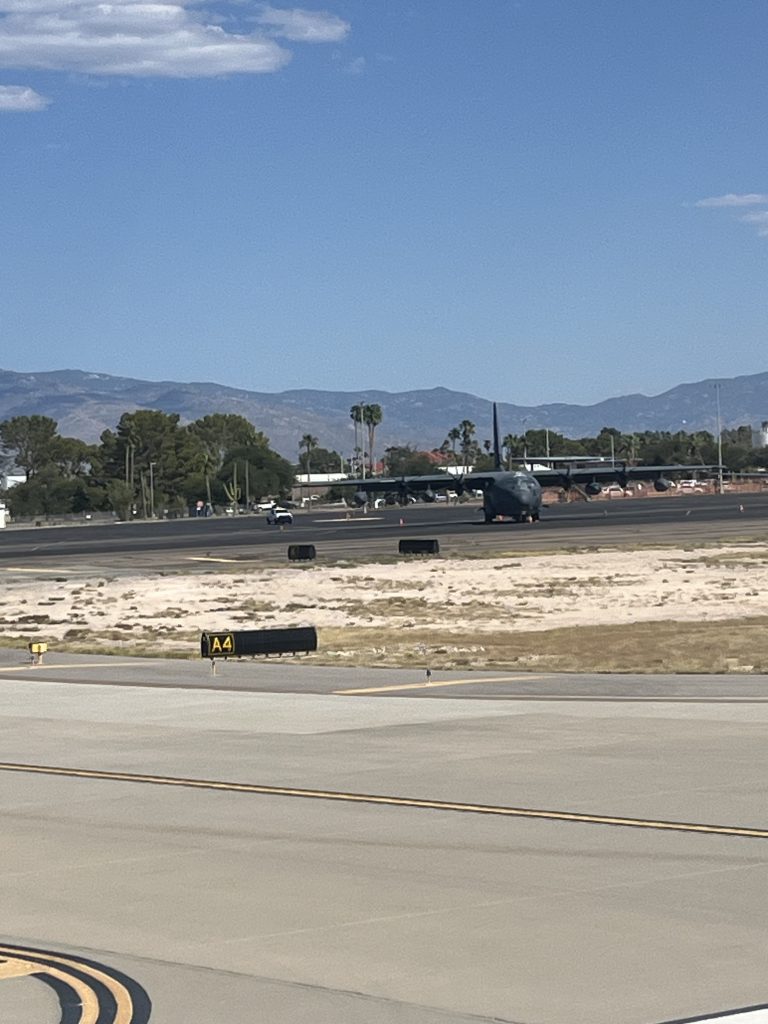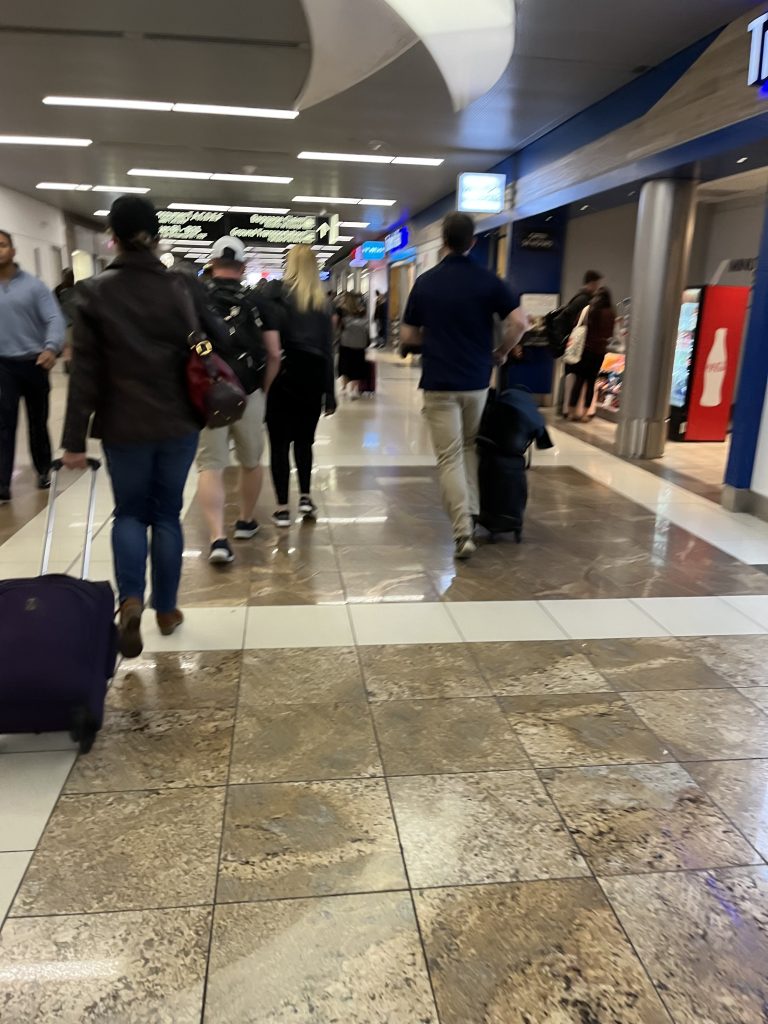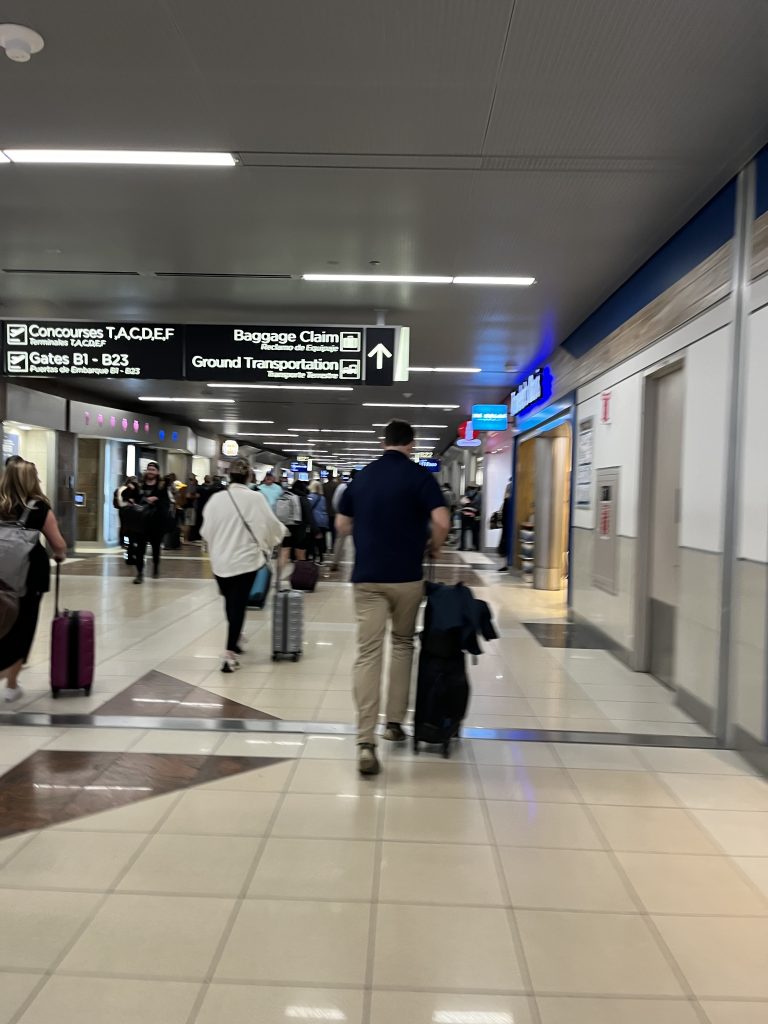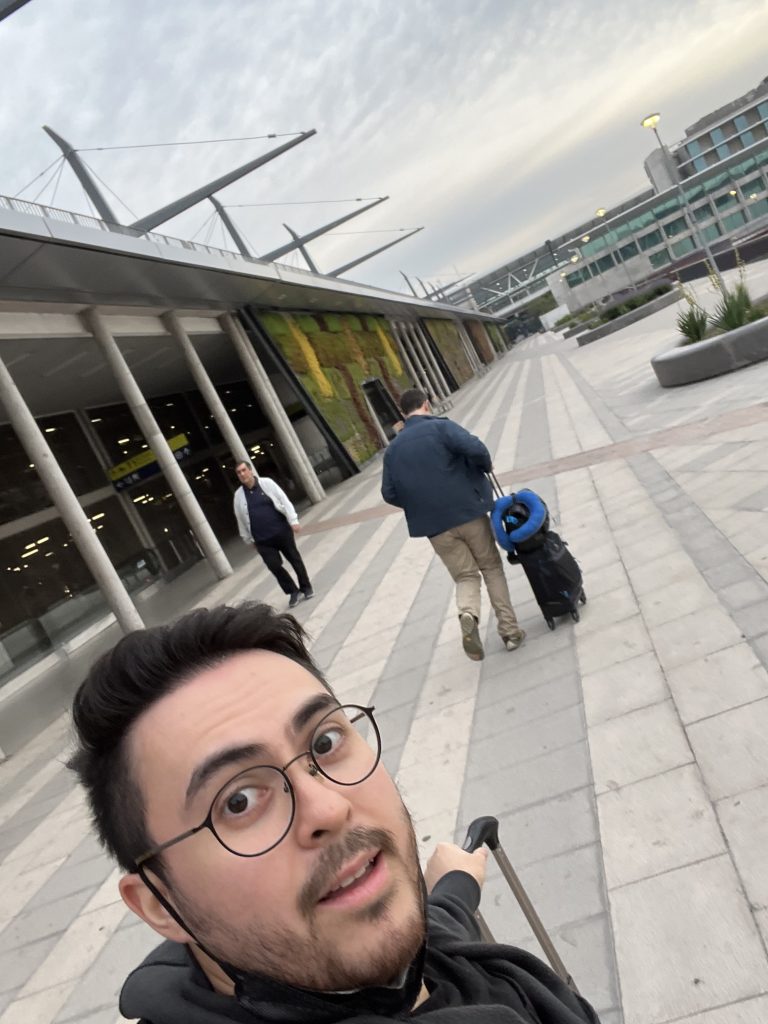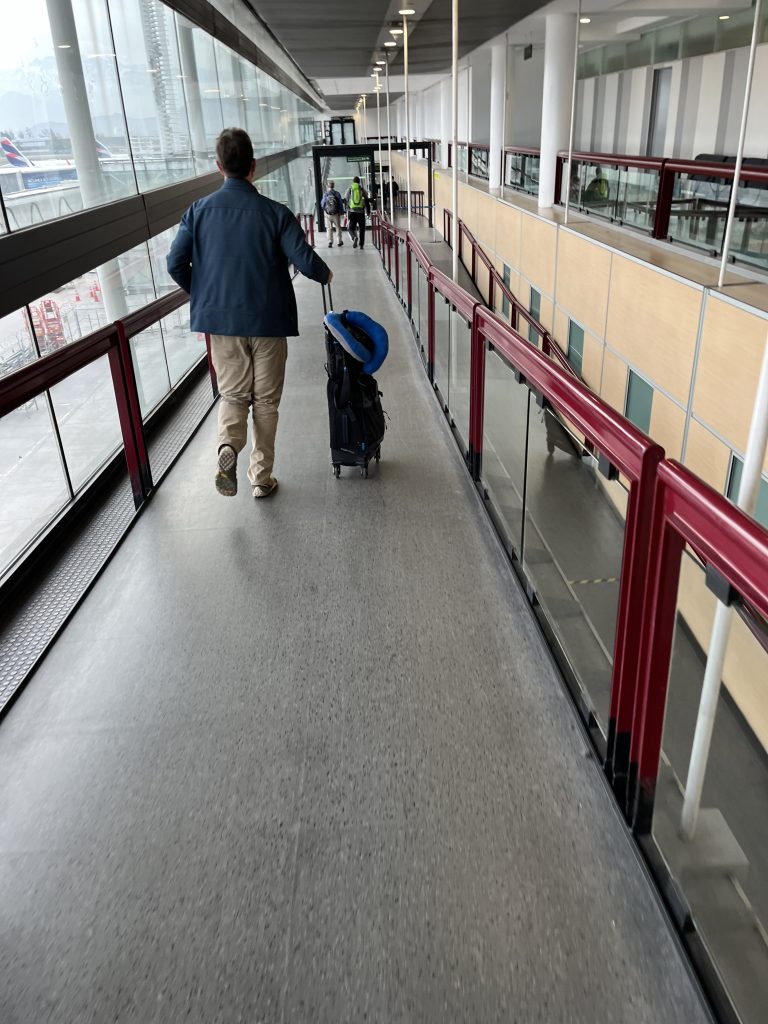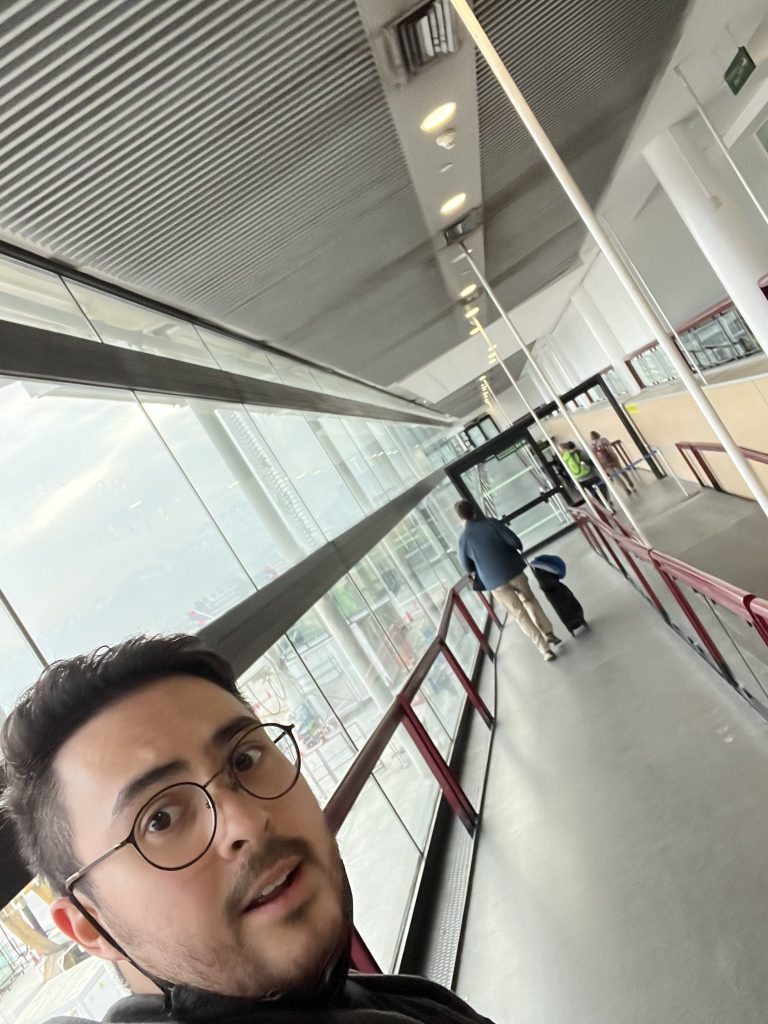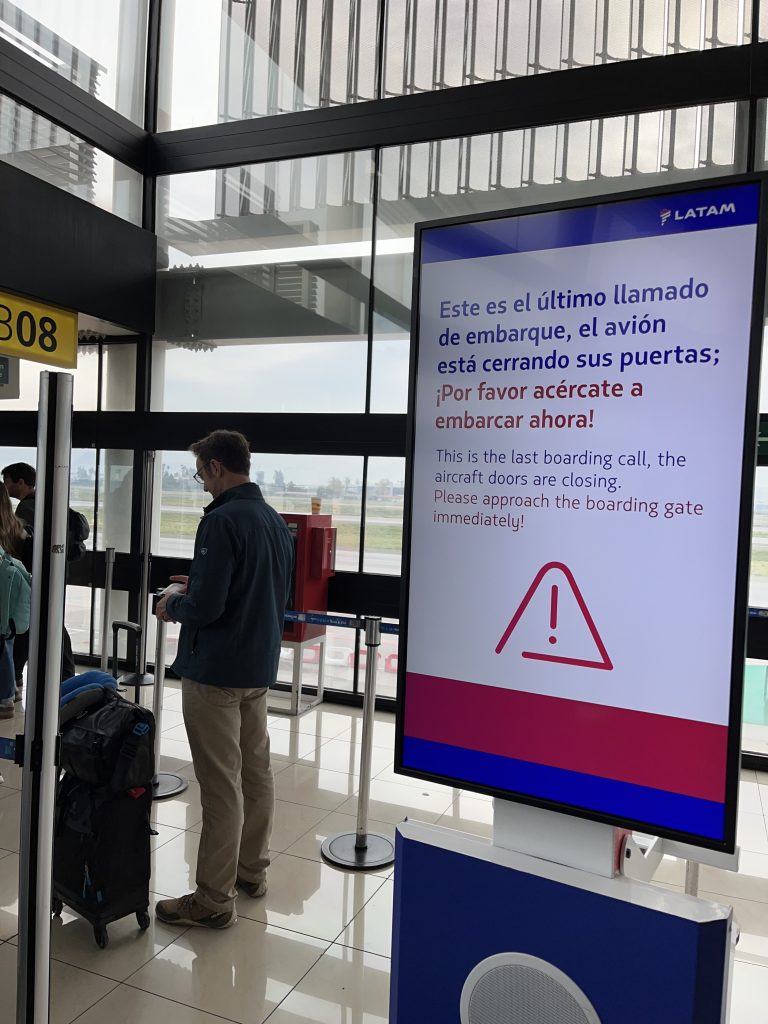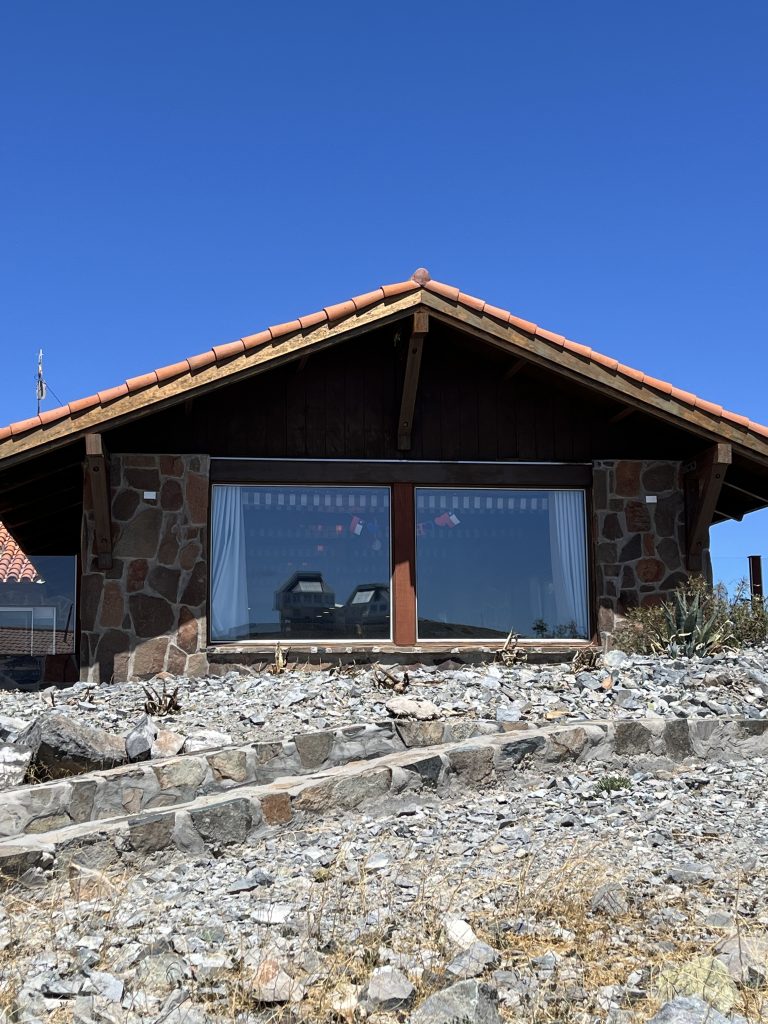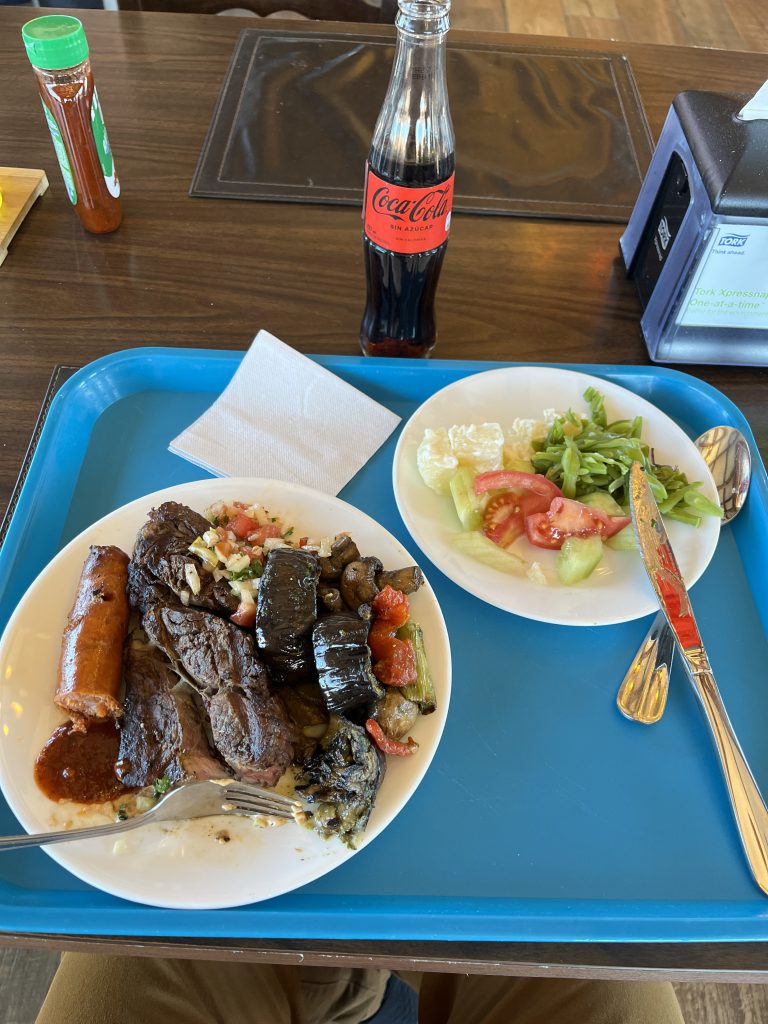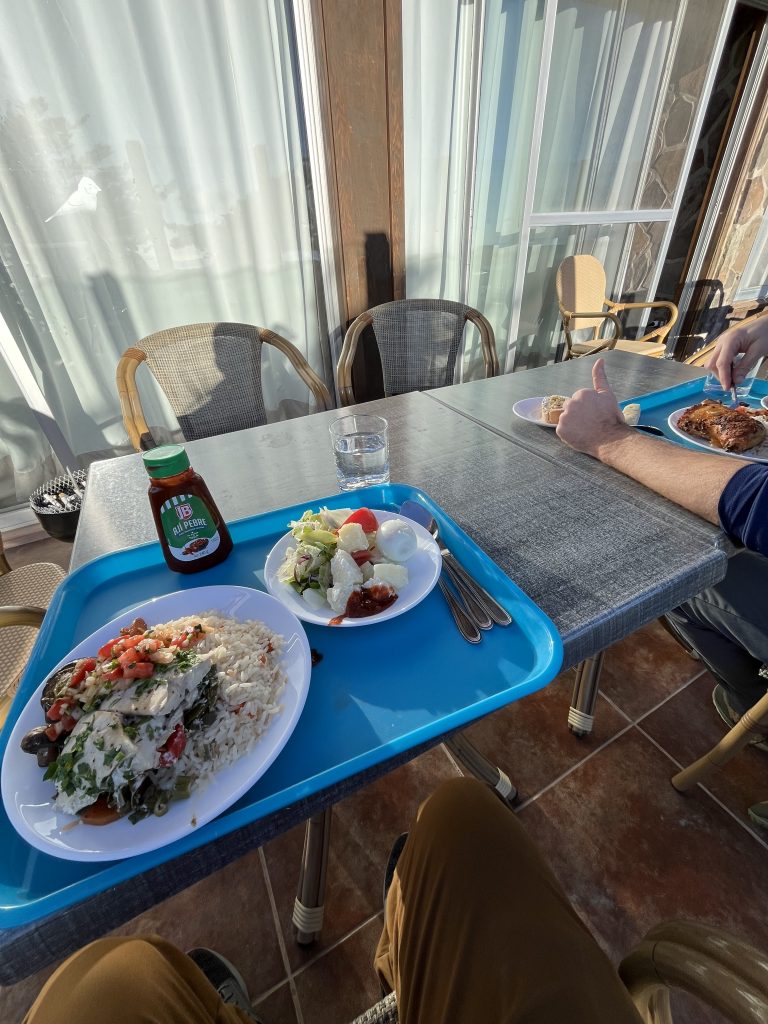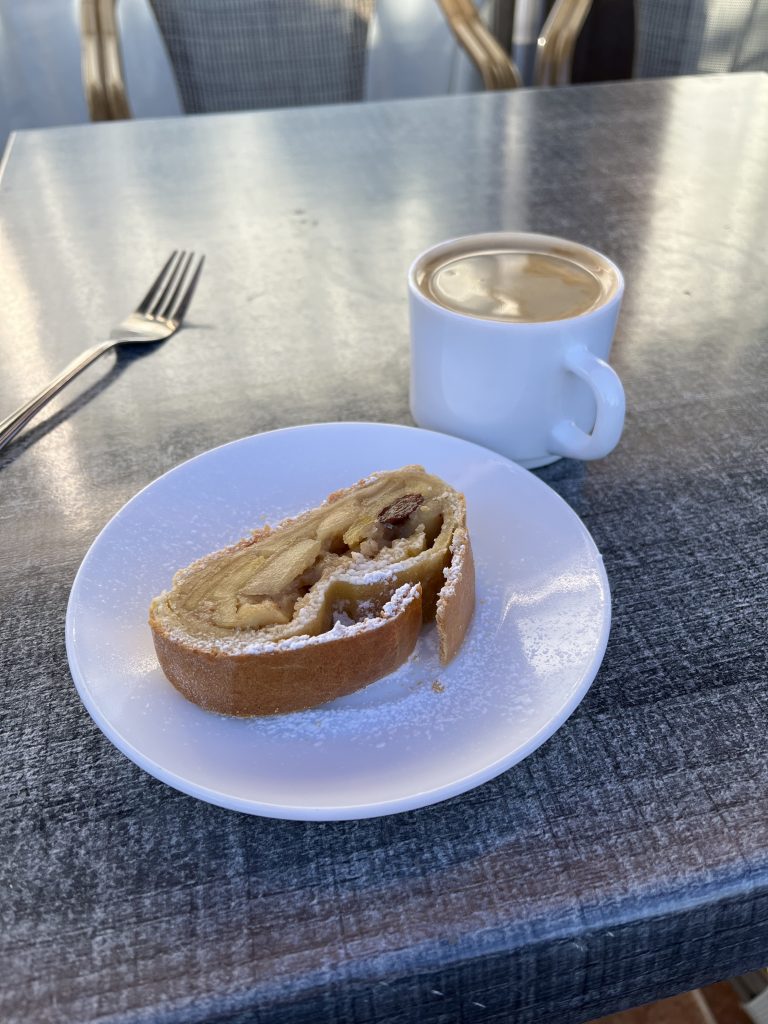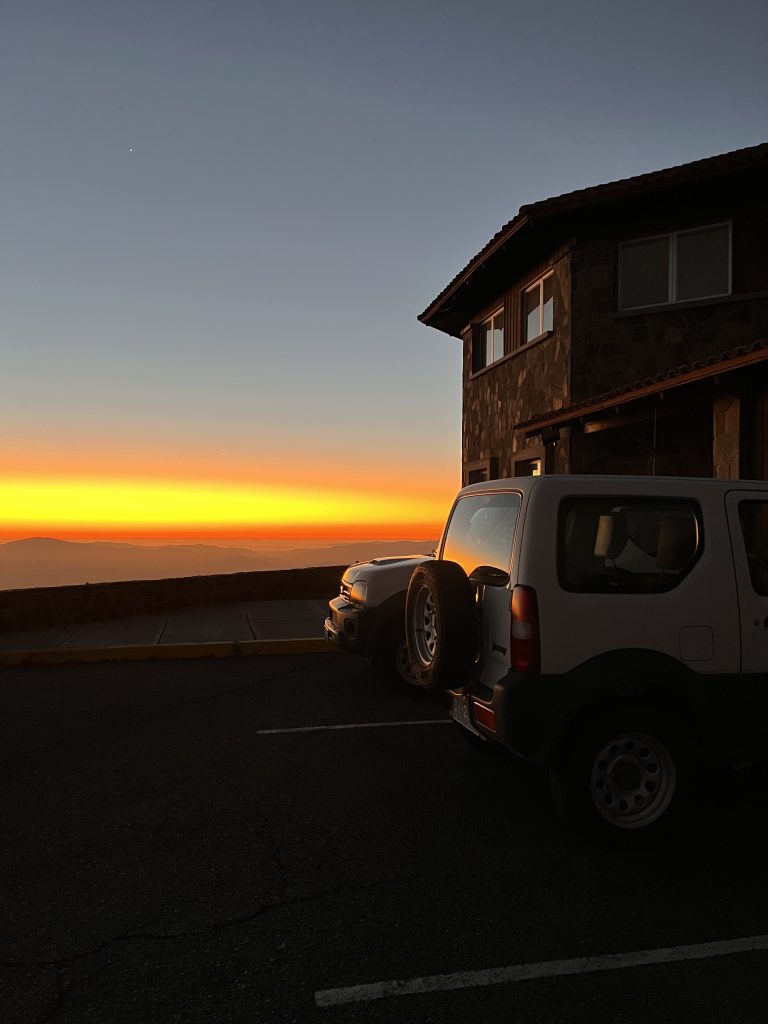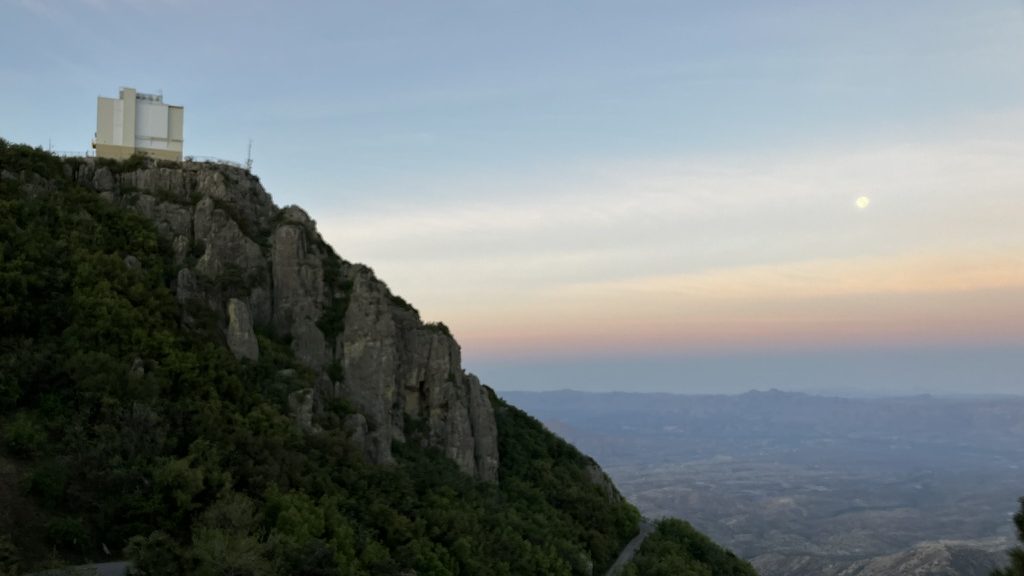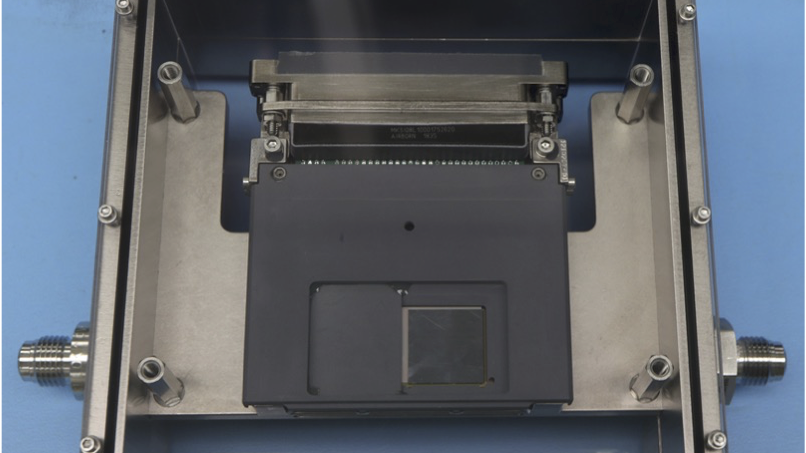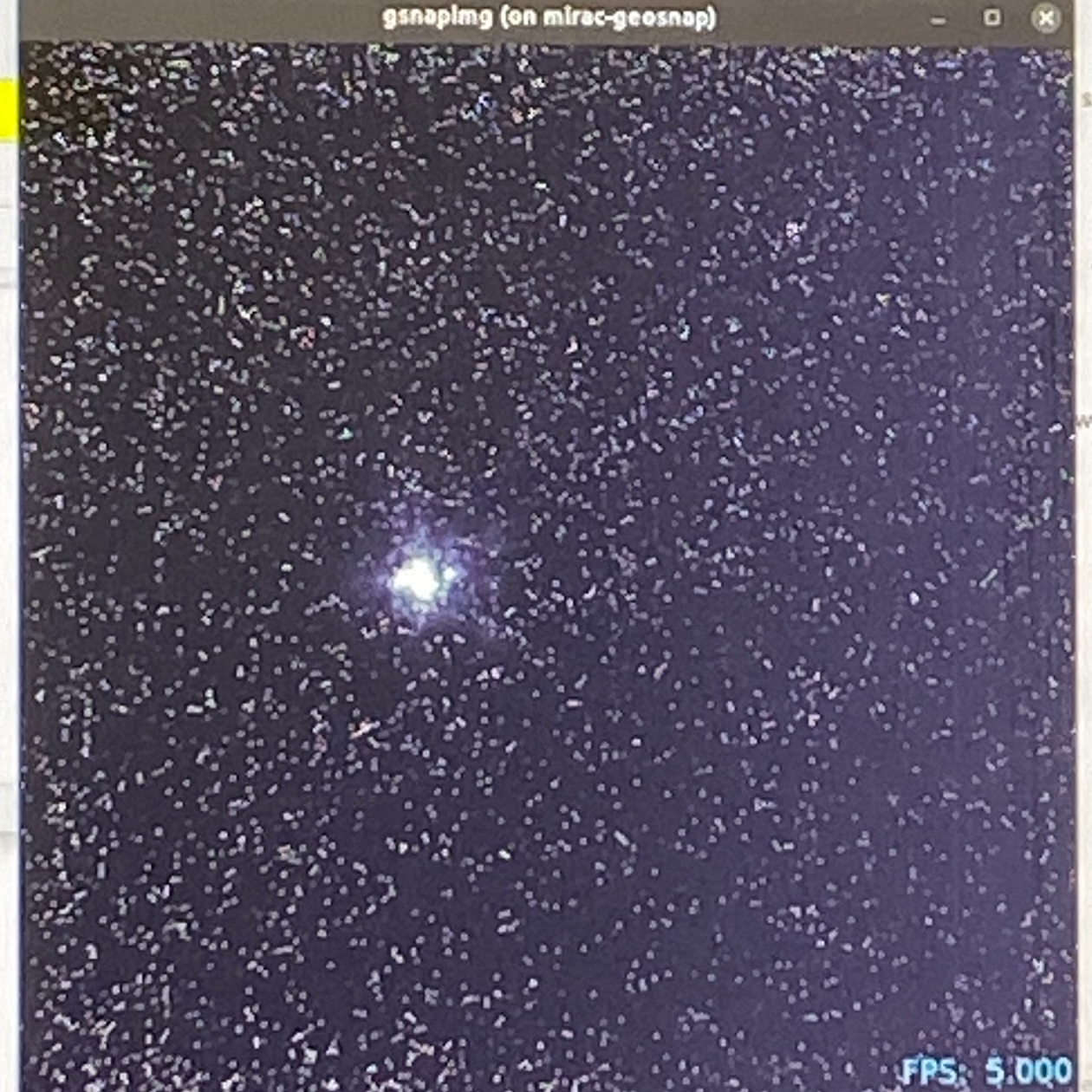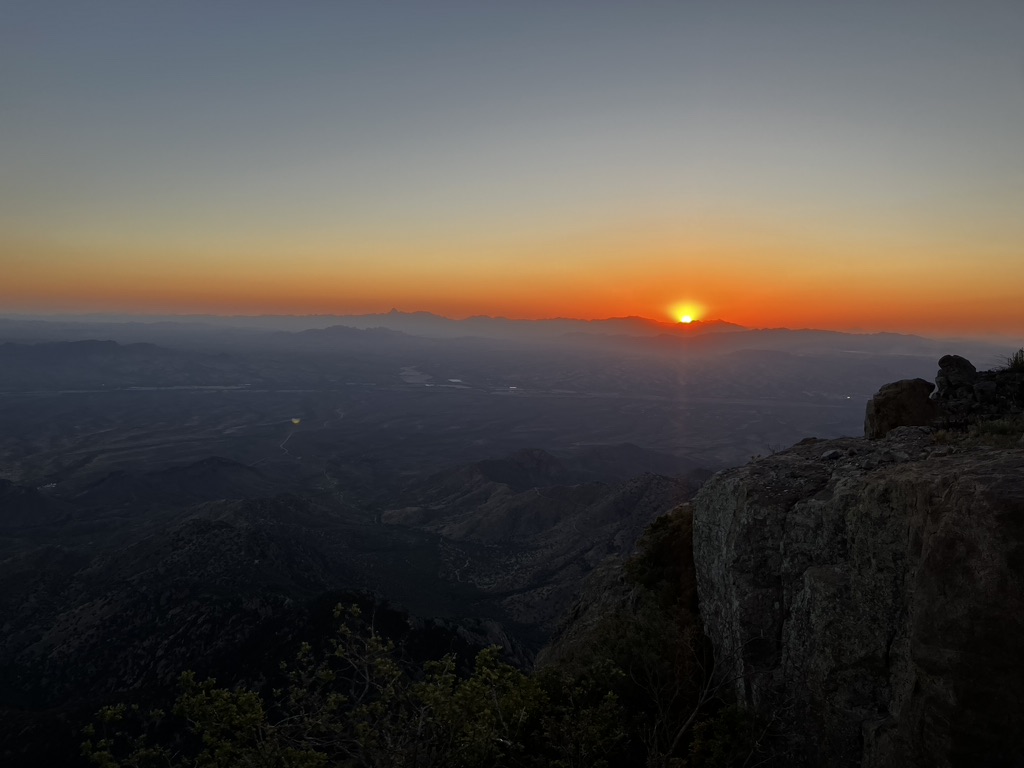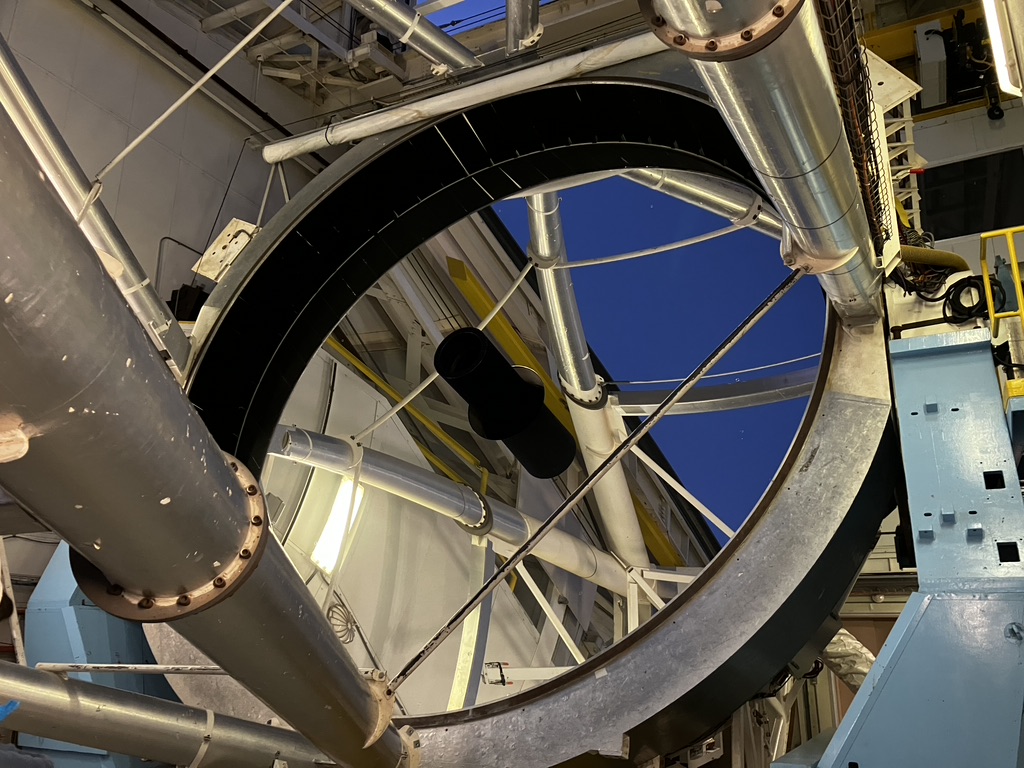Walking back in the dark with Jay tonight under quiet stars, I remarked that “even though I arrived yesterday it already feels like a week, but in a good way.” Long days can do that – leaving the cleanroom at 12:00am was pushing well into our sixteenth hour of work. Time in general though has a more, ethereal quality on top of the mountain. It can be hard to remember that life continues outside of the immediate challenges of the day, and that every day before now hasn’t been just like this one.
The main goal for today was to align the LLOWFS – this is Lyot Low Order Wavefront Sensor or “YO-FUSS” using the Spanish pronunciation. When paired with a transmissive coronagraph, rejected light from the Lyot stop provides “free” photons for driving auxiliary wavefront control. The system had been roughly assembled in Tucson and we had poetic alignment instructions as courtesy of Sebastiaan Haffert and Chat-GPT:
In the lab where lasers gleam,
Align the Lyot, chase the beam.
Turn it on, ensure the light,
Hits the center, sharp and bright.
Flip the clamps, turn them around,
Old positions, stoppers found.
Pull the wheel, the system’s grace,
Install the mirror in its place.
Put it back, a careful feat,
Center Lyot, alignment neat.
Tilt the laser, shift with care,
Card in hand, another’s stare.
Lens one’s heart, its center true,
Shim stock, tilt—just right for you.
Centering near, within a mill,
Precision holds, steady still.
Lens one now done, we move ahead,
Z filter next, where paths are led.
Remove the tube, the chip exposed,
The cap now off, the system grows.
Pivot here, or pivot there,
Camera moves with patient care.
Optical feedback, guiding hand,
Or move again, the next command.
Install the tube, frosted within,
Pinholes small where light begins.
Lens to guide, align once more,
Precision sought, forever sure.
As most alignment projects go, lived experience quickly derailed from our flowery aspirations. While Jared fought down a flurry of unexpected problems that I won’t pretend to summarize, Maggie, Jay and I slogged through the full range of alignment processes and human emotion necessary to correctly focus the reflected beam onto the LLOWFS sensor.
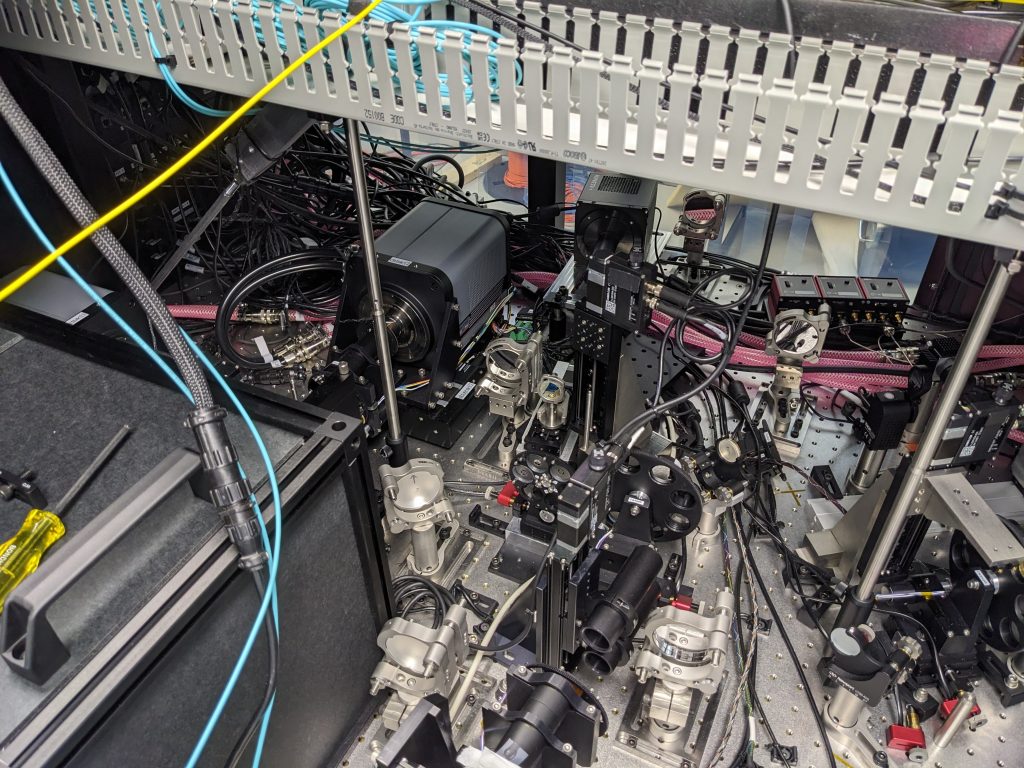
The main difficulty in alignment came from the sheer number of things (I’m going to stick with “things” here because my gut reaction at the end of the day is to use a couple swear words but a lot of time went into each part) in the neighborhood around the Lyot wheel. Opening the panels this morning made me think of the frog that hops into lukewarm water and quickly finds itself boiled alive. When I started looking at PIAA designs in early 2022 this area was fairly crowded but manageable. Years later the optomechanics have grown layers deep and maneuvering a stubby Allen key through the optical jungle can take thirty seconds and Zen breathing techniques.
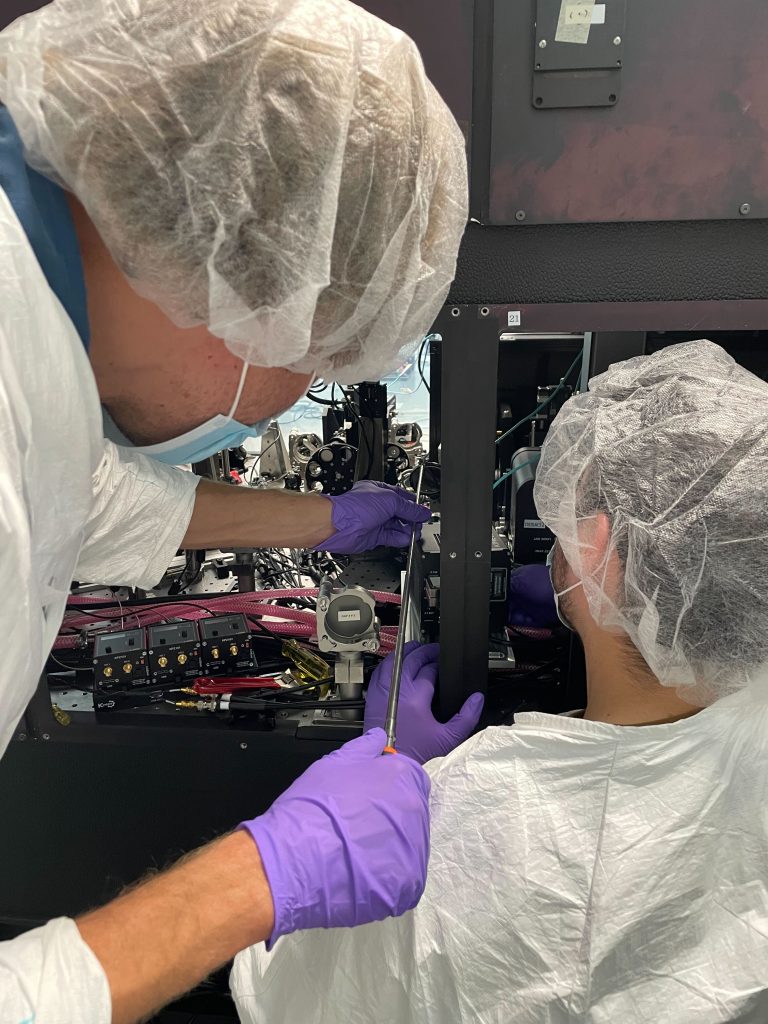
We added a mirror to the Lyot wheel to use a reflected beam for the alignment. Picomotors on the stage means that translating the wheel in x and y are quite straightforward, but using the wheel as a mirror instead of a simple aperture means that the tip and tilt in both directions became critical. The immediate descent into shim madness gave a portent of the long day in store for us.
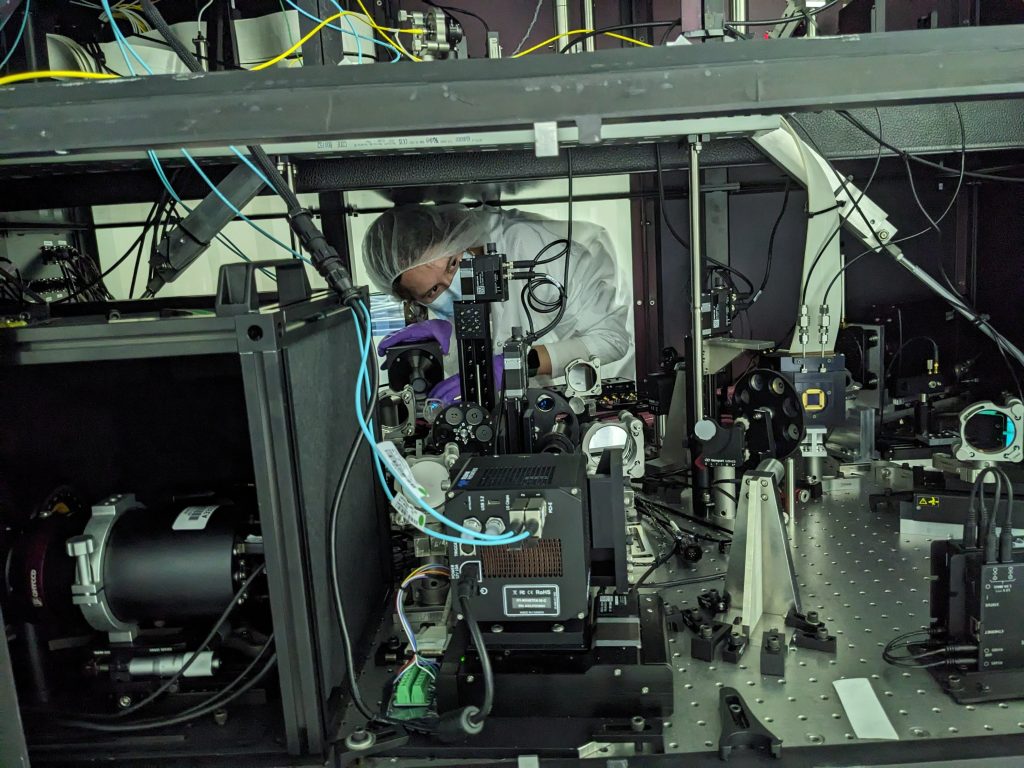
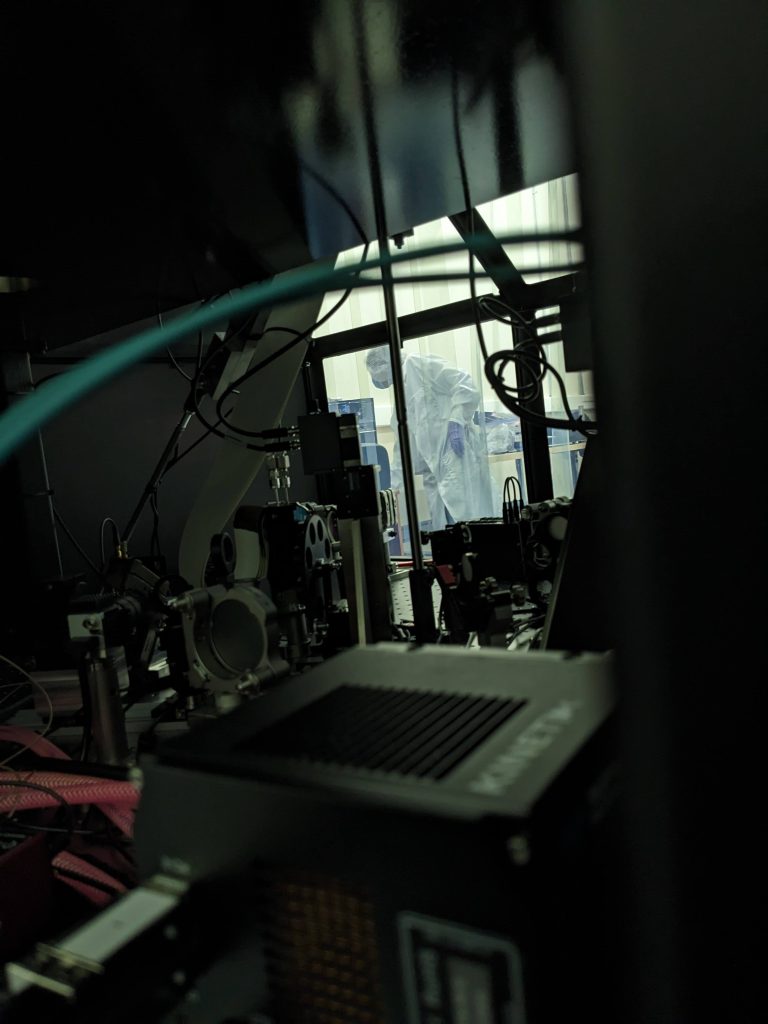
Aside: it’s rather silly to spend much more time writing the details of our work today when it’s already late and breakfast will be served in six hours. I’m going to scatter a few photos through the post and call it sufficient. The biggest takeaway from the day though is that external challenges are always manageable with the right team around you. Despite the setbacks and technical frustrations that were part of the alignment process, problems became fun, interesting challenges when shared with the group. I appreciate doing this work on an engineering run, with no rush at night and enough time to listen to each other’s perspectives. Amid this collaboration and working in such a beautiful place, one long day makes us only more prepared for the next.
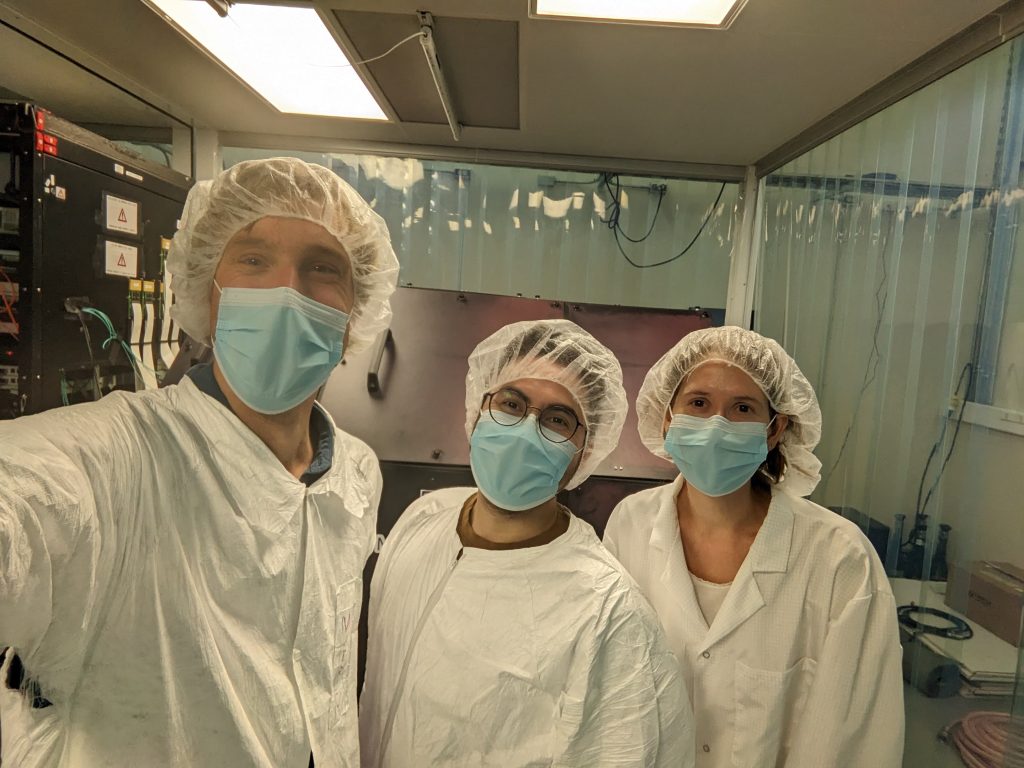
Song of the day
I had about twenty songs stuck in my head through the course of the day. When doing delicate or technical work I like to nurture their memory on repeat because I find that tends to relax the high stakes. Of the songs that I played during breaks afterwards, sitting outside the cleanroom and appreciating the warm sun, this was the only one that met the blog rule.
